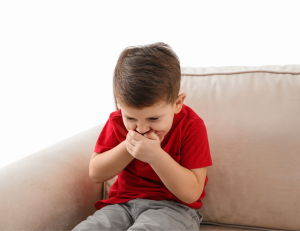As a mom, seeing your baby in distress and discomfort due to teething can be heart-wrenching. The helpless feeling is overwhelming, but arming yourself with the right knowledge can make all the difference. By familiarising yourself with the signs, symptoms, and soothing techniques, you can provide your little one with much-needed relief during this challenging phase.
What is baby teething?
Teething is the process by which an infant’s first teeth, commonly known as baby or milk teeth, emerge through the gums. This typically begins around six months of age, but it can start as early as three months or as late as 12 months. The entire teething process can last until the child is about three years old.
Signs and symptoms of teething.
Recognising the signs of teething can help you act quickly to soothe your baby’s discomfort. Common symptoms include:
Increased drooling
Excessive drooling is one of the first signs of teething. You might find that your baby’s chin and clothes are constantly wet. To prevent skin irritation, gently remove the drool and use a bib.
Chewing and biting
Teething babies often chew on anything they can handle, from toys to fingers. This behaviour helps relieve the pressure on their gums.
Irritability and fussiness
The discomfort of teething can make babies cranky and harder to soothe. You may notice your baby being more irritable, especially in the evenings.
Swollen and tender gums
Your baby’s gums may appear red, swollen, and tender to the touch. Gently massaging the gums with a clean finger can sometimes provide relief.
Changes in eating and sleeping patterns
Teething can disrupt your baby’s usual eating and sleeping habits. They might refuse food or wake up more frequently at night.
Soothing techniques for teething babies
Knowing how to soothe your teething baby can make the process less stressful for both of you. Here are some effective methods:
Use teething toys
Teething rings and toys designed for teething can be a great help. Choose those that are made of safe, non-toxic materials. Cooling these toys in the refrigerator can provide extra relief.
Gentle gum massage
Use a clean finger to massage your baby’s gums gently. This can help ease the pain and discomfort.
Cold washcloth
A cold, wet washcloth can soothe a teething baby. Let your baby chew on it to help reduce inflammation and numb the pain.
Teething biscuits
If your baby is old enough to eat solid foods, teething biscuits can provide relief. Ensure they are sugar-free and made with healthy ingredients.
Over-the-counter remedies
Over-the-counter teething gels and pain relievers can help soothe your baby’s discomfort. Always consult with your paediatrician before using any medication.
Comfort and cuddles
Sometimes, all your baby needs is extra love and attention. Holding, cuddling, and comforting your baby can go a long way in helping them feel secure and less distressed.
When to see a doctor
While teething is a natural process, there are times when you might need to consult a healthcare professional:
High fever: A mild fever can be associated with teething, but a high fever may indicate an infection.
Persistent symptoms: If your baby’s symptoms are severe or persist for an extended period, it’s best to seek medical advice.
Unusual symptoms: If you notice symptoms that are not typical of teething, such as a rash, diarrhoea, or ear pulling, consult your doctor to rule out other issues.
Teething can be challenging for both babies and parents, but understanding the signs and symptoms and knowing how to provide relief can make a significant difference. By staying informed and being proactive, you can help your baby navigate this developmental milestone with greater ease and comfort. Remember, this too shall pass, and soon, your baby will be flashing a full set of adorable teeth.
Sources












